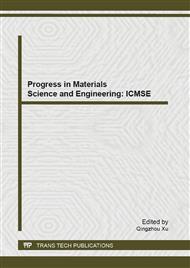p.790
p.796
p.803
p.807
p.813
p.821
p.827
p.833
p.839
An Inverse Heat Transfer Problem about Crack of Boiler Furnace Wall Based on Infrared Thermographic Temperature Measurement
Abstract:
A three-dimensional physical and mathematical models of the heat transfer in the furnace specimen with an internal defect were established. Combined with the theory of infrared thermographic temperature measurement, using the L-M method, the inverse heat transfer problem of the boiler furnace wall bricks with crack was investigated. The size of defect was accurately estimated. Conclusions can be drawn by computational analysis, firebrick played a major role in the furnace thermal insulation effect. When firebrick fails, the inspection surface temperature is abnormal, and the temperature difference between the outer surface of the defect and that of the normal wall is an exponential relationship with the increase of defect depth.
Info:
Periodical:
Pages:
813-820
Citation:
Online since:
October 2013
Authors:
Keywords:
Price:
Сopyright:
© 2013 Trans Tech Publications Ltd. All Rights Reserved
Share:
Citation:


